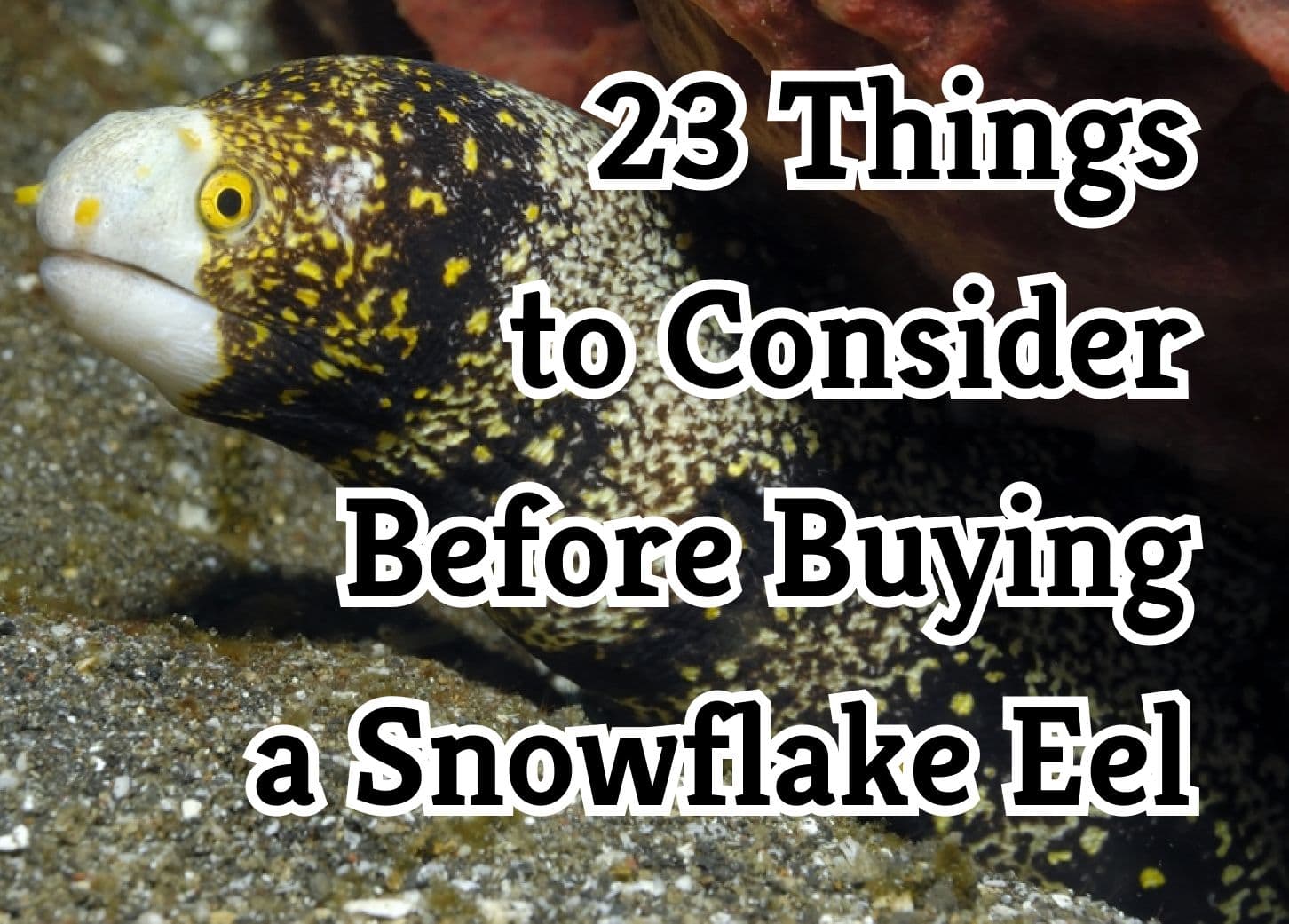Understanding the Snowflake Eel: Key Facts

Thinking about getting a snowflake eel? These stunning saltwater fish (also known as snowflake morays) are hardy, eye-catching, and surprisingly beginner-friendly — but only if you’re well-prepared.
We’ve kept snowflake eels ourselves, and while they’re not the most demanding fish out there, they do require a serious setup and some know-how. Here’s what you need to know before bringing one home.
What Makes Snowflake Eels Unique?
First off, snowflake eels are true characters. They’re bottom-dwelling, nocturnal, and love to wedge themselves into rocky caves. Visually, they’re striking — cream-colored bodies with black and yellow blotches that look a bit like inkblots (we always thought “Rorschach eel” would’ve been a perfect nickname).
They come from the Indo-Pacific, so they’re used to warm, salty waters and reef-like environments. As adults, they can grow up to 24 inches (around 60 cm), which means space is non-negotiable.
Despite being carnivores with a mouthful of teeth, snowflake eels are some of the less aggressive morays. That doesn’t mean they’re harmless, though — keep your hands out of the tank, especially around feeding time.
Setting Up the Right Tank
This is where most of the work (and budget) goes. A young eel might be okay in a 20-gallon tank, but you’ll need to size up fast. A 75-gallon tank (or larger) is ideal for a full-grown eel, especially if you plan to add tankmates.
Some key setup tips from our own experience:
- Wide, not tall: Eels are bottom-dwellers, so focus on floor space over height.
- Rocky caves are a must: Give them multiple hiding spots using large rocks or commercial aquarium caves. They’ll feel safer and settle in faster.
- Secure the lid: These guys are escape artists. Any opening — even a small gap in the lid or plumbing — can turn into a great escape. We once had an eel make it into the sump filter. Not fun.
- Strong filtration: Snowflake eels are messy eaters. Invest in a high-quality filter and protein skimmer if you’re keeping corals.
Feeding Time
Feeding your eel can be both fun and a bit nerve-wracking. They don’t see well and rely on smell, so they can be a bit clumsy — or enthusiastic — at mealtime.
What they eat:
- Frozen or freeze-dried seafood like shrimp, krill, squid, scallops, or clam
- Live ghost shrimp when they’re new (helps them transition to tank life)
- Enriched meaty foods with added vitamins
What to avoid:
- Freshwater feeder fish like goldfish — they can cause liver damage in saltwater eels
Feed them 2–3 times a week, usually in the evening. Don’t panic if they skip a meal or two — it’s pretty normal. Some even go into short periods of fasting or “hibernation.” If it lasts too long, check in with your vet.
Tankmates: Who’s Safe?
Snowflake eels can cohabitate with the right fish and invertebrates, as long as everyone has enough space and food.
Good companions:
- Lionfish, wrasses, tangs, and other large, semi-aggressive fish
- Starfish, sea urchins, anemones
- Corals (they ignore them)
Not safe:
- Small fish that can fit in their mouth
- Crustaceans like shrimp, crabs, and lobsters — these are their favorite snacks!
If you want to keep more than one snowflake eel, introduce them at the same time, make sure they’re similar in size, and provide plenty of hiding spots.
Water Quality Essentials
For a healthy snowflake eel, your tank water needs to stay within these ranges:
- Temperature: 72–80°F (22–27°C)
- pH: 8.1–8.4
- Hardness: 8–12 dGH
- Salinity: Standard marine saltwater levels
Keep a regular maintenance schedule and test your water often, especially after feeding or adding new tankmates.
Health & Vet Care
Yes, fish vets exist — and if this is your first fish, it’s worth finding one nearby just in case. Most snowflake eels are hardy, but keep an eye out for signs like:
- Sudden loss of appetite
- Floating or swimming oddly
- Visible injuries or changes in skin color
We recommend having a secure transport container ready, just in case you need to bring your eel in for a checkup. A sturdy plastic tub with a tight lid works better than a bag for larger eels.
Final Thoughts
Snowflake eels aren’t your average pet fish. They’re big, bold, and need a well-planned tank — but if you’re ready to commit, they’re also incredibly rewarding to keep.
They’re not cuddly, but they have personality. Watching ours slither out of their caves at night or snag a piece of shrimp with that lightning-fast strike still amazes us, even years later.
If you’ve got the space, budget, and curiosity, a snowflake eel might just be the underwater companion you didn’t know you needed.
